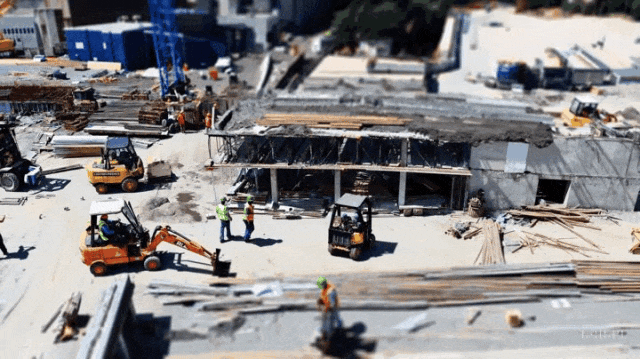OpenAI Unveils Sora: A Groundbreaking Video Generation Model Redefining Reality
Just a few days ago, when Big Ivan glanced at his phone for a quick social media check, he was stunned by a piece of news that nearly caused him to spit out his drink in disbelief! OpenAI, the renowned American AI startup behind the groundbreaking ChatGPT released last year, had just unveiled their latest marvel: the Vincent video model, Sora. 🎥
Not only did they introduce Sora, but they also dropped some jaw-dropping AI-generated videos for the world to see. According to OpenAI, these videos boast three remarkable features: they’re 60 seconds long, offer multi-angle shots within a single video, and incorporate world models. 🌍
In essence, OpenAI has achieved a quantum leap in video generation effects, setting Sora apart from its predecessors.

So, how did OpenAI, which has contributed to ChatGPT, achieve AI video generation this time, and almost achieve the real thing? What are the technical advantages of this type of AI video generation, and what may it do to our What impact does it have on life and even human society?
Sora’s technology
Let’s tackle the first question first. Currently, OpenAI remains quite secretive about the inner workings and algorithms of its large AI continuous video model.
They’ve only hinted on social media that OpenAI has made a breakthrough in “providing multi-frame prediction for the model”.
🤐 Based on Big Ivan’s personal interpretation, this appears to signify that Sora has attained the capability to deeply and emotionally comprehend and construct the universal command language issued by humans through self-learning.

Sure, here’s a revised version incorporating the requested words and emojis, as well as reformatting for clarity:
“Universal language”: In OpenAI’s demonstration mode, Sora’s method of generating videos is remarkably simple. All it requires is English (or other languages) to describe the desired scene, completely bypassing the complexities of traditional 3D video generation. 🎥💬
“Profound”: Sora’s ability to comprehend human language and construct videos based on that understanding is truly profound. The level of detail and depth required for video generation far surpasses text descriptions. If ChatGPT can achieve certain details through text, those descriptions must be fully manifested in the video, showcasing exponential complexity and depth. 🤯📝
“Emotion”: AI-generated images and videos have historically struggled with conveying human emotions. For instance, current AI-generated portraits often lack emotional depth, featuring only stylized smiles, leading some critics to label them as “lifeless.” However, characters presented by the Sora model exhibit incredibly natural, logical, and nuanced emotions that seamlessly adapt to their surroundings.
To borrow a line from “Prometheus,” they are like the “actors in these videos… with a soul,” resembling real individuals more closely than actual people.

Certainly, among these features, Big Ivan believes that “construction” is the most crucial aspect, as emphasized by OpenAI’s concept of the “world model.” 🌍
We all recognize that the real world operates according to specific physical laws: objects obey gravity, wind tousles hair, and fragile items shatter predictably when dropped.
Traditional 3D modeling and AI models have struggled in this domain, often encountering issues when attempting to faithfully replicate real-world physics. Constructing our reality poses significant challenges, and achieving accuracy in this realm remains a formidable task. 🛠️

In this respect, Sora demonstrates a remarkable ability almost on par with reality. 🐶❄️🕯️🌸
For instance, it has released AI videos showcasing a golden retriever puppy frolicking in the snow, a whimsical creature playing with candles, and people leisurely strolling through Japan’s cherry blossom season. These videos adhere closely to the laws of physics, exhibiting seamless transitions and logical sequences that perfectly align with cause and effect.
Moreover, according to OpenAI, Sora’s “construction” capability can achieve infinite details akin to the real world. Unlike traditional 3D modeling, which is limited by frame count, Sora can replicate details endlessly. Coupled with its near-real perception and hearing capabilities, this ability to construct the world is truly awe-inspiring.
Sora’s influence
Therefore, like ChatGPT, Sora will undoubtedly have a significant impact on our daily lives. The influence of the former on our daily routines extends far beyond merely generating text output or engaging in casual conversation. Some companies have already begun utilizing ChatGPT to formulate plans, resulting in considerable time savings and enhanced operational efficiency. 🚀📈

Compared to Sora, ChatGPT’s impact on society is negligible. Sora’s emergence will lead to widespread adoption, with costs decreasing rapidly over time. Short video creators will feel the initial impact, as Sora enables nearly cost-free video creation without the need for real individuals.
Sora’s capabilities will improve, potentially affecting medium and long video creators. If its capabilities extend to over an hour, even movies and TV series could be produced using Sora. 🌟📽️

Many may doubt Sora’s capabilities, assuming it only creates virtual worlds and characters. However, this is far from the truth. Sora seamlessly bridges reality and virtuality in video production. Even AI video platforms, though still in their infancy, can ingest real people’s data to generate AI-rendered images. Sora, functioning as a data black box, effortlessly handles this task.
For instance, you can input images of your idol into Sora for self-learning iterations. The more data you provide, the closer the virtual character resembling your idol becomes. You can then describe actions, witnessing your idol come to life on screen.
For instance, current technology can accurately capture body data to achieve refined characteristics, which, when fed into Sora and subjected to self-iteration, allows your idol to perform seamlessly. 🌟👤🎬

From this perspective, Sora will catalyze change in our lives and reshape human society faster and more profoundly than ChatGPT. Moreover, the most significant transformations are yet to unfold.
Imagine witnessing your plans evolving rapidly in a graphical representation, envisioning urban and road construction, airport terminals, and other large-scale infrastructure projects unfolding intuitively. For military strategists, wouldn’t it be invaluable to visualize battle plans with the aid of artificial intelligence?
With Sora, this becomes effortless. Simply input data, and Sora will manifest it visually. The more data you provide, the more intricate and detailed the representation becomes. 🌟🏗️🛣️🛫👨💼🤖

Certainly, such advancements rely heavily on computing power and storage capacity. With substantial computing power, we may eventually witness a remarkable spectacle: the entire human society graphically displayed in the form of Sora on a supercomputer before us.
This begs the question: what distinguishes the real world from the virtual? Which of these realms is genuine, and which is simulated? Moreover, could our reality be merely a simulation crafted by another civilization?
In the realm of Sora, is our cognition autonomous, or are we merely a series of algorithms and electrical signals subservient to Sora? These questions evoke both awe and dread, prompting deep contemplation.
However, for now, let’s take a step back. It’s anticipated that by 2024, numerous AI video generation tools akin to Sora will emerge, inviting everyone to observe and speculate. 🖥️🌐🤔🔍






